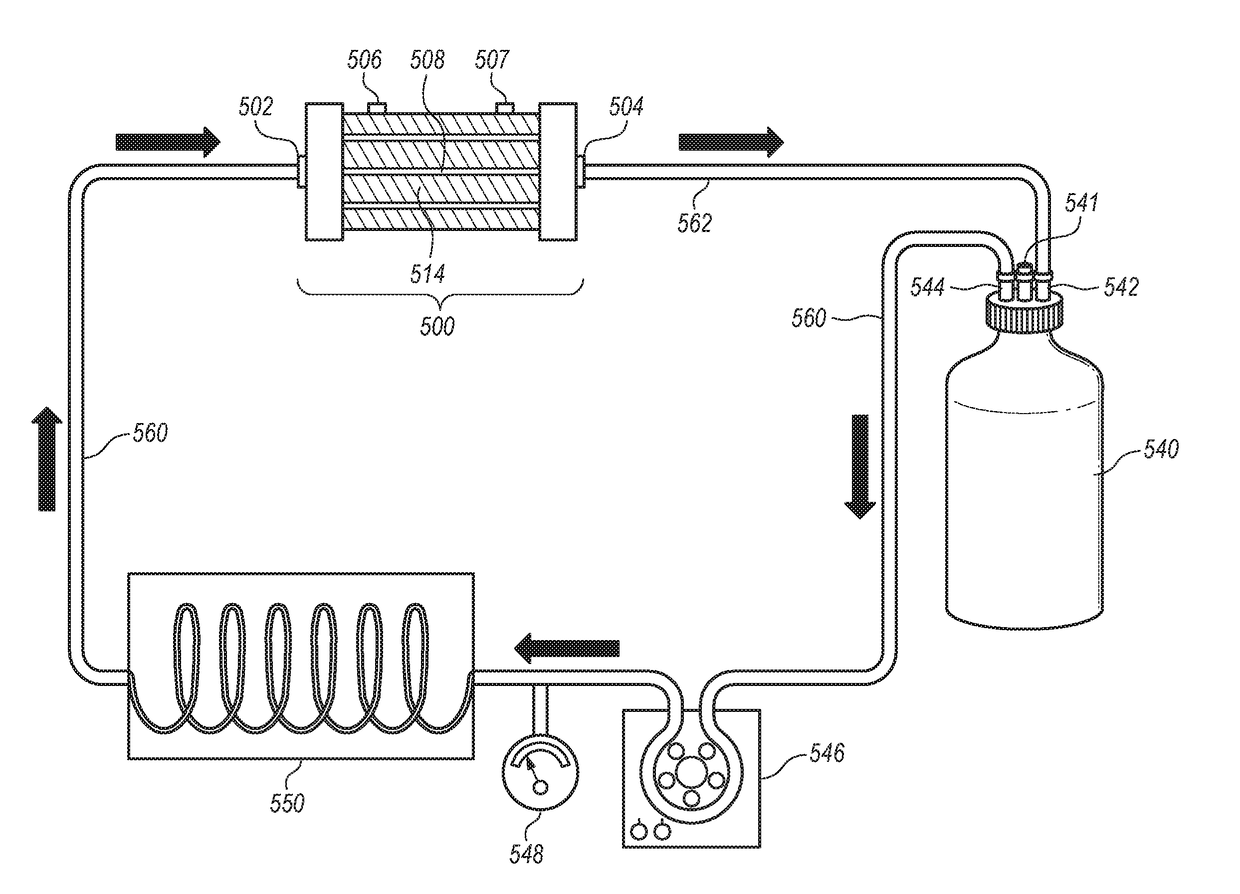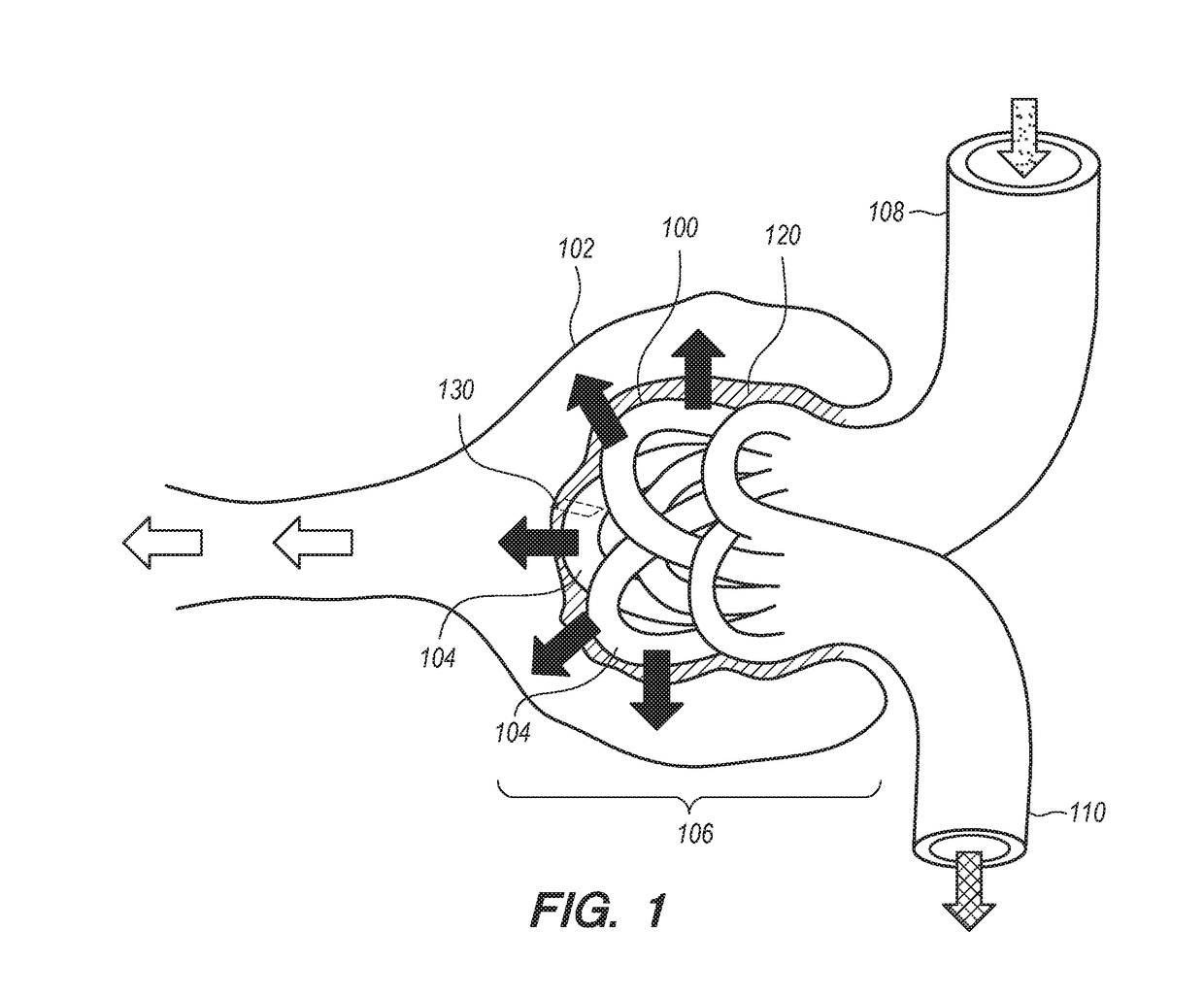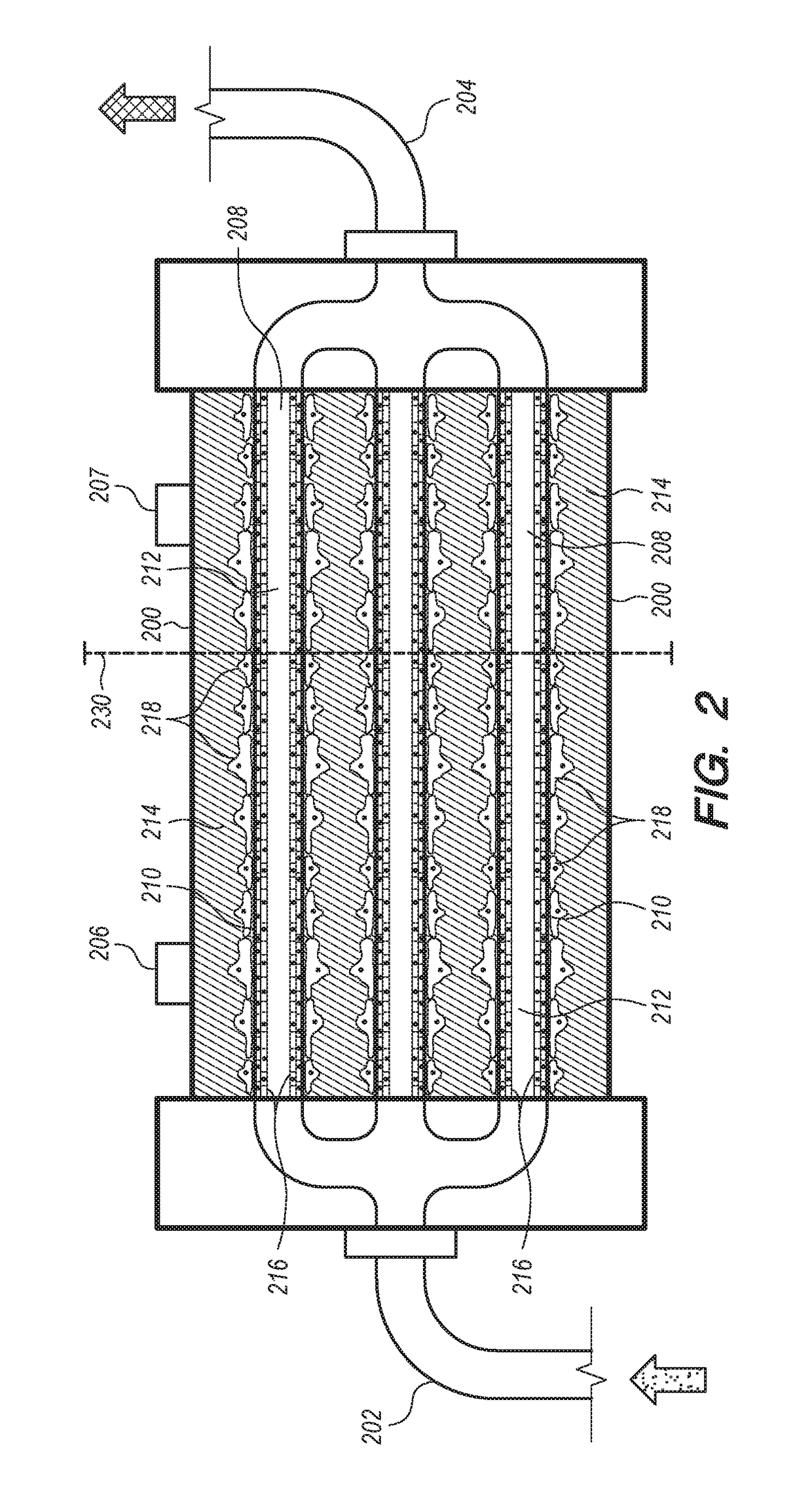Compositions and methods for a three dimensional ex-vivo glomerular cell co-culture biological engineering model
a biological engineering model and glomerulus technology, applied in the field of applicability, methods and systems of a three-dimensional ex-vivo biological engineering model of a glomerulus, can solve the problems of limited ability and problematic culture system types
- Summary
- Abstract
- Description
- Claims
- Application Information
AI Technical Summary
Benefits of technology
Problems solved by technology
Method used
Image
Examples
example 1
Hollow Fiber Bioreactor Models for Renal (Glomerular) Health and Renal (Glomerular) Disease Model
[0259]This example provides a description of a hollow fiber bioreactor cell co-culture models of a glomerulus used to simulate renal (glomerular) model systems in both health and diseased conditions finding use with the invention.
[0260]Cells are co-cultured in a e.g. FiberCell® Systems (Frederick, Md.) PS+ module cartridge (small cartridge, Catalog No. 4300-C2025). The hollow fibers in this cartridge are made from polyvinylidene fluoride (PDVF), are 10 cm in length, have an inner diameter of 700 μm and outer diameter of 1300 μm. The fiber walls have a pore size of 0.1 μm as rated by the manufacturer. The cumulative surface area of all the fibers (20 fibers) in the system is 75 cm2 and the extra-capillary space (ECS) volume is 2.5 mL. The FiberCell® Systems (Frederick, Md.) PS+ fibers have a surface chemistry that facilitates the attachment of extra-cellular matrix proteins, antibodies, c...
example 2
Hollow Fiber Bioreactor (HFBR) Model System No. 2—Cell Culture Establishment
[0266]This example describes the inoculation and co-culture maintenance of a hollow fiber bioreactor of the invention.
[0267]Glomerular endothelial cells are cultured in a suitable culture media with VEGF (5 ng / mL) for one week in order to avoid subsequent detachment of podocyte cells in the glomerular co-culture with podocyte cells in the HFBR. See Satchell et al., 2006. “Conditionally immortalized human glomerular endothelial cells expressing fenestrations in response to VEGF,”Kidney International, 69: 1633-1640.
[0268]The glomerular endothelial cells are seeded onto the inner lumen of the hollow fibers in the bioreactor. After all ports are closed, place the HFBR in the incubator for one hour, rotating the HFBR 180 degrees at the halfway point without any flow so that the endothelial cells can attach (see FiberCell Systems. 2015b. “User Manual). Following introduction of the cells into the luminal space of ...
example 3
Assays for Glucose and Albumin
[0274]This example describes testing protocols for glucose in a defined cell culture media during cell culture establishment. In the scenario of a batch mode (retentate recycle) system (FIG. 5), the media samples are obtained at the time of each medium replacement and analyzed, for example, for glucose.
[0275]Glucose Assay.
[0276]A kit provided by Sigma-Aldridge, Inc.® (catalog# GAGO20-1KT) can be used to determine glucose levels, more specifically, the change in glucose level from the previous day. The reagent employed causes, over a 15-minute incubation, the conversion of glucose to glucose-6-phosphate through a phosphorylation reaction, followed by the oxidation of the latter in the presence of NAD (nicotine adenine dinucleotide) to 6-phosphogluconate. The oxidation reaction results in an equal number of moles of NAD being reduced to NADH, the latter of which increases the absorbance of the sample at a 340 nm wavelength as measured by a spectrophotomet...
PUM
| Property | Measurement | Unit |
|---|---|---|
| volumetric flow rate | aaaaa | aaaaa |
| molecular weight cut | aaaaa | aaaaa |
| inner diameters | aaaaa | aaaaa |
Abstract
Description
Claims
Application Information
 Login to View More
Login to View More - R&D
- Intellectual Property
- Life Sciences
- Materials
- Tech Scout
- Unparalleled Data Quality
- Higher Quality Content
- 60% Fewer Hallucinations
Browse by: Latest US Patents, China's latest patents, Technical Efficacy Thesaurus, Application Domain, Technology Topic, Popular Technical Reports.
© 2025 PatSnap. All rights reserved.Legal|Privacy policy|Modern Slavery Act Transparency Statement|Sitemap|About US| Contact US: help@patsnap.com



